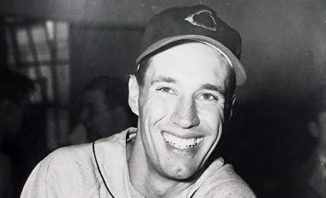119 years ago today, the prolific African-American painter Lois Mailou Jones was born. With her best works exhibited in a half-dozen fine arts museums across the US, including the Met and Smithsonian, she brought the color and flavor of Africa and the Caribbean to the world through her extensive personal traveling. Prolific at the canvas, her career lasted 7 decades, and earned her a national day of July 29th. READ more about the artist… (1905)
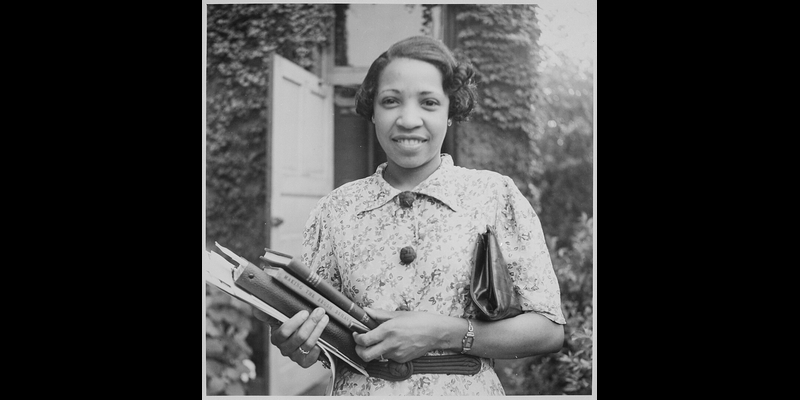
In the inter-war period, Jones attained notoriety as an artist for her works celebrating African culture as part of the Harlem Renaissance. It culminated in 1937, when Jones received a fellowship to study in Paris at the Académie Julian. She would produce 40 works en plein aire at the academy, and hone her techniques.
In 1938, she produced Les Fétiches, an African-inspired oil painting that is owned by the Smithsonian American Art Museum. Jones painted Les Fétiches in a Post-Cubist and Post-Primitive style based on some African masks she saw in a Paris museum.
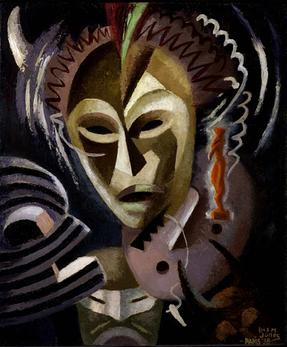
Between 1954 and 1968, she painted for presidents and exhibited her works in the most prestigious art museums in America before embarking on documentary work across Africa and the Caribbean which influenced her art style. Her work remains celebrated and highly valued by collectors, which have included several presidents and museums across Europe.
More Good News on this Date:
- The Times of India, the world’s largest circulated English language daily newspaper, was founded as The Bombay Times (1838)
- A new Dutch constitution drafted by Johan Thorbecke to limit the power of the monarchy, strengthening parliament and ministers, was proclaimed – and is still in use today (1848)
- Jeremy Brett, the actor who for many will always be the best Sherlock Holmes, was born (1933)
- Independence gained for Panama (1903, from Colombia); for Poland (1918, from Russia); Dominica (1978, from Britain); and the Federated States of Micronesia (1986, from USA)
- The Illinois lawyer Carol Moseley-Braun became the first black woman elected to the U.S. Senate—after becoming the first woman to defeat an incumbent U.S. Senator in an election, and the first female Senator from Illinois (1992)
- The rapper P Diddy (Sean Combs) ran in the New York City Marathon and raised $2,000,000 for the city’s educational system, finishing the race in four hours and eighteen minutes (2003)
- Republican Susana Martinez of New Mexico became the first Hispanic female governor elected in the United States—and during her first term earned one of the highest approval ratings of any governor in the U.S. (2010)
- Motivational marathoner ‘Backwards Bill’ Reilly completed his 30th NYC Marathon, showing that even with cerebral palsy and lacking strong arms, he could navigate by pushing his specially built wheelchair backwards with one leg (2013)
79 years ago today, “Der Bomber” Gerhard Müller was born. Simply one of the greatest goal scorers to ever play, the rather un-imposing 5-ft 9-in German from Nördlingen would go on to become the striker to which all German strikers are compared.
At the club level, he played almost all his professional years at Bayern München, scoring 398 goals in 453 appearances, within which there remain the records for both career goals in the German top division, and most career goals for Bayern in almost every scoring category.

Author David Winner wrote about Müller as being “short, squat, awkward-looking and not notably fast; he never fitted the conventional idea of a great footballer, but he had lethal acceleration over short distances, a remarkable aerial game, and uncanny goalscoring instincts.”
For some players, the weight of the national team shirt is too much to bear, but it fit Müller like a racing stripe down the hood of a Ford Mustang, and with West Germany, he scored 68 goals in 62 appearances, which means as of now he is tied-24th on the list of all-time international goalscorers, despite playing fewer matches than every other player in the top 75 since the first FIFA World Cup in 1932, and one of only two players with a scoring average at national level of better than a goal-per-game.
After a successful season at Bayern Munich, he scored ten goals at the 1970 FIFA World Cup for West Germany where he received the Golden Boot as top goalscorer. In 1972, he won the UEFA European Championship with the country and was the top goalscorer, scoring two goals in the final. Two years later, he scored four goals in the 1974 World Cup, including the winning goal in the final. (1945)
68 years ago today, The Wizard of Oz was televised for the first time, and was so successful—with 53% of US television viewers tuning in—that it was destined to become an annual event in American homes.

MGM sold CBS the rights to televise the film for $225,000 per broadcast. Starring Judy Garland as ‘Dorothy’ and Ray Bolger as ‘the Scarecrow’, the TV premier of the film, which aired nearly 20 years after the film’s release, was hosted by Bert Lahr, who played ‘the Cowardly Lion’, and Garland’s 10-year-old daughter, Liza Minnelli.
CBS ran it again three years later during the holidays and gained an even larger television audience.
Beloved for its use of Technicolor, fantasy storytelling, musical score, and memorable characters, The Wizard of Oz was nominated for six Academy Awards, including Best Picture of 1939, and won two—for Best Original Song (Over the Rainbow) and Best Original Score by Herbert Stothart. (1956)
64 years ago today, the Great Swamp National Wildlife Refuge was established by an Act of Congress after a year-long legal battle that pitted local residents against New York and New Jersey officials wishing to turn the watershed, which gives rise to the Passaic River, into an airport.

In that year, local conservationists and the North American Wildlife Foundation quickly purchased enough land in the core of the swamp to assemble and donate to the federal government, that it qualified the property for perpetual protection as a National Wildlife Refuge.
The famous Arizona Cong. Stewart Udall—responsible for laws such as the Clear Air, Clean Water, and Endangered Species Act—immediately championed the efforts of these residents. He described them as having mounted the greatest effort ever made by residents in America to protect a natural habitat—and later, in 1964 as the Secretary of the Interior, he oversaw its dedication as a refuge.
The initial donation that assured its protection was 2,600 acres (11 km2), but by 2010, the extent of the Great Swamp National Wildlife Refuge had grown to nearly 7,800 acres (32 km2) with 12 square miles of varied habitats. (1960)
And, 33 years ago today, a free concert was held in San Francisco’s Golden Gate Park to honor the work of concert promoter Bill Graham, who had been killed in a helicopter crash the prior week.
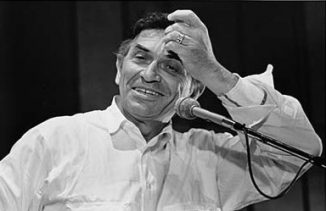
300,000 people gathered to see many of the entertainment acts that Graham had supported over the years, including Santana, Crosby, Stills, Nash and Young, The Grateful Dead, Robin Williams, Journey, and Joan Baez, who performed and told stories about the famed local celebrity. (1991)
60 years ago today, the residents of Washington D.C. were able to vote in a presidential election for the first time.
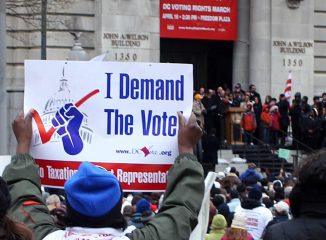
Amazingly, people who lived in the nation’s capital had no voting rights in any presidential contest before then. Thanks to the Twenty-third Amendment to the US Constitution adopted three years earlier, the District was granted a number of votes in the Electoral College according to their population, as though it were a tiny state. (1964)
105 years ago today, the Hall of Fame baseball pitcher Bob Feller was born on an Iowa farm. The young prodigy who joined the Cleveland Indians at age 17 struck out 15 batters in his debut start, and became the first pitcher to win 24 games in a season before he was 21. Things only got more impressive—even though he took time to serve his country.
He threw three no-hitters in his 18-year career and tallied the most American League wins in seven different years. He could have upped that total, but for the fact that he enlisted in the US military one day after the Pearl Harbor attack and served on battleships and gunners for four years.
Upon his return in 1946, the farm boy recorded 348 strikeouts, a total not exceeded for nearly two decades. ‘Bullet Bob’ was named by Sporting News as the “greatest pitcher of his time,” and Red Sox great Ted Williams called Bob Feller “the fastest and best pitcher I ever saw during my career.” WATCH a video below… (1918)
SHARE the Milestones, Memories, and Movies…




















